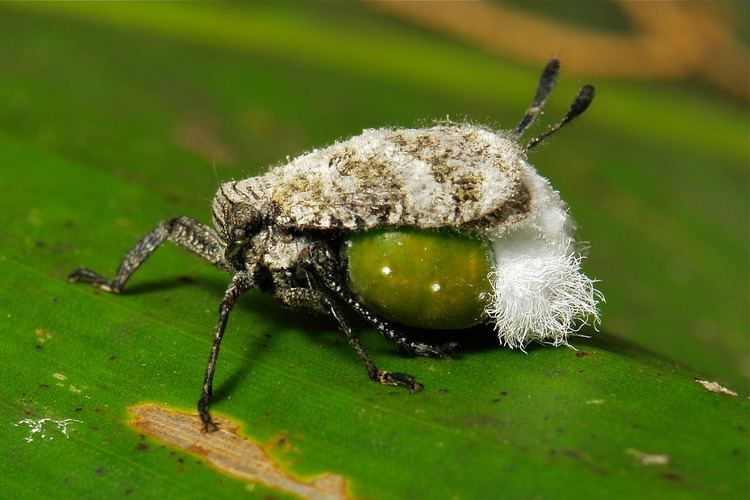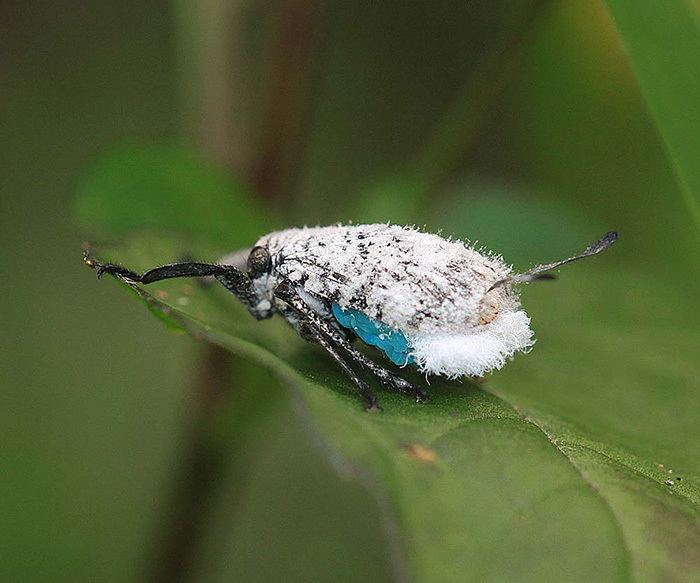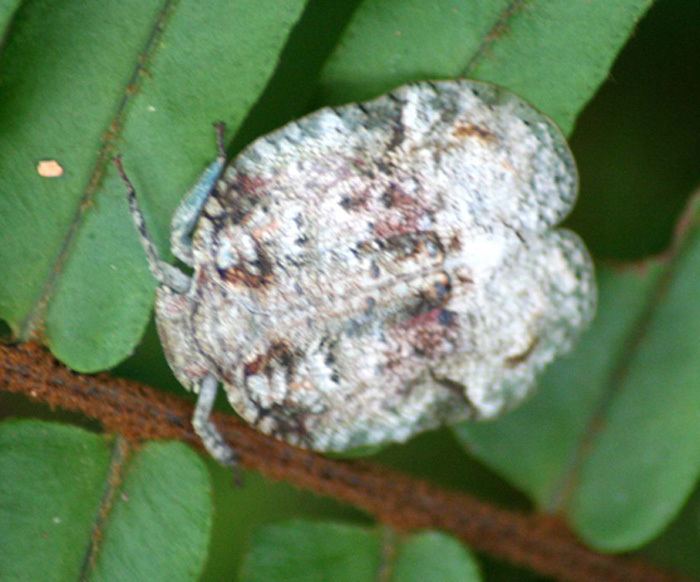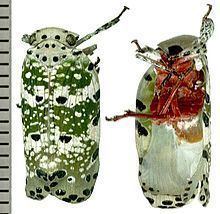Superfamily Fulgoroidea | Rank Family | |
Similar Lophopidae, Achilidae, Ricaniidae, Acanaloniidae, Tropiduchidae | ||
Ancyra sp eurybrachidae in khao yai np
The Eurybrachidae (sometimes spelled "Eurybrachyidae" or "Eurybrachiidae") are a small family of planthoppers with species occurring in parts of Asia, Australia and Africa. They are remarkable for the sophistication of their automimicry.
Contents
- Ancyra sp eurybrachidae in khao yai np
- Eurybrachidae
- Description
- Diversity
- Biology
- Pest status
- Taxonomy
- References

Eurybrachidae
Description

Eurybrachidae generally resemble related families of planthoppers in the Fulgoromorpha. They are moderate-sized insects, generally 1 to 3 cm long when mature, but they are unobtrusive and camouflaged with brown, grey or green blotches, mimicking foliage, bark or lichens. Their mottled camouflage patterns are most intense on the large forewings of many species, hiding the broad and often aposematically colourful abdomen. The frons of the head is characteristic, being broader than it is long.
Diversity

The oldest known Eurybrachid is from the middle Eocene of Messel. The fossil genus Amalaberga is not placeable within the modern classification in two subfamilies Platybrachinae and Eurybrachinae.
Biology

Eurybrachidae generally are sap-suckers of trees or shrubs. In Australia, the genus Platybrachys associates with Eucalyptus trees, while the genera Olonia and Dardus associate with Acacia.

Each eurybrachid female is likely to have an adult lifespan of some months, during which she lays several clutches of eggs. Females of many species deposit the eggs in clusters on bark or the undersides of leaves, placed in a fingerprint sized patch of white waxy material, covered by a white capsule that protects them from many predators. However, small parasitoid wasps are adapted to attack the eggs by piercing the capsules with their ovipositors, and some species of beetles, such as some Coccinellidae will chew through the capsule and eat the eggs if they find a clutch.
The nymphs, being less agile than the adults, rely on mimicry, camouflage for direct protection. However, they also secrete honeydew that attracts ants. The ants in turn protect them from wide varieties of predators and parasitoids.
The southeast Asian genus Ancyra is well known for having a pair of prolonged filaments at the tips of the forewings; they arise near a pair of small glossy spots; this creates the impression of a pair of antennae, with corresponding "eyes", a remarkable example of automimicry. The "false head" effect is further reinforced by the bugs' habit of walking backwards when it detects movement nearby, so as to misdirect predators to strike at its rear, rather than at its actual head. Some other species, including at least some African species, not all of them with equally detailed automimicry, nonetheless wave their filaments and walk backwards in much the same way when disturbed. However, in some genera, such as Eurybrachys, correctly or otherwise, the nymphs are figured as bearing caudal tufts of bristles such as one finds in other families of the Fulgoroidea.
Pest status
Most Eurybrachidae are not regarded as pests, but like many families of plant sucking Hemiptera, they do include some species of concern. For example, Eurybrachys tomentosa is regarded as a pest of tropical Asian forestry, causing damage in plantations of sandalwood and Calotropis.
Taxonomy
The family Eurybrachidae are regarded as being within the superfamily Fulgoroidea. Over 50 species of have been described and have been assigned to some 20 genera.
